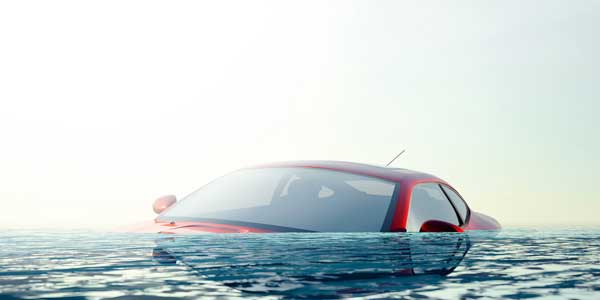
In the wake of Hurricane Harvey, the Coordinating Committee for Automotive Repair is urging repairers, insurers, recyclers, auto auctions, dealerships and others to take a “safety-first” mindset when dealing with vehicles that might have been damaged in the flooding.
In a new whitepaper, the committee notes that “there is no recommended method or procedure to restore submerged vehicles from flooded-affected areas to pre-accident condition.”
“Because insurers are expected to make settlement decisions on a large number of vehicles, many of these vehicles may be shipped to other parts of the United States,” the committee says in the new whitepaper. “Mechanics, collision repairers and detail shops should be on the alert for vehicles coming from Texas and Louisiana and use appropriate safety measures.
“In most states, the law requires that the vehicle be noted in some manner as a ‘flood vehicle.’ Because some cars involved in the flood are registered to out-of-state visitors, it is possible that flood vehicles without Texas or Louisiana titles may be moved and be sold without declaration as to where the vehicle was flooded. Because of the possibility of bacterial infection, all workers should use maximum personal protection with any flooded vehicle and be well-trained.”
Exposure to flood waters can cause skin rashes, diarrhea, stomach and respiratory problems and – in extreme cases – diseases such as cholera.
The whitepaper mentions two online tools that enable individuals to verify a vehicle’s history and status: the National Motor Vehicle Title Information System (https://www.vehiclehistory.gov/), which was made accessible to the public after Hurricane Katrina and Superstorm Sandy; and VINCheck, which the National Insurance Crime Bureau established after Katrina.
The whitepaper also includes 10 inspection tips from the National Automobile Dealers Association to detect flood-damaged vehicles.
Article courtesy BodyShop Business.













